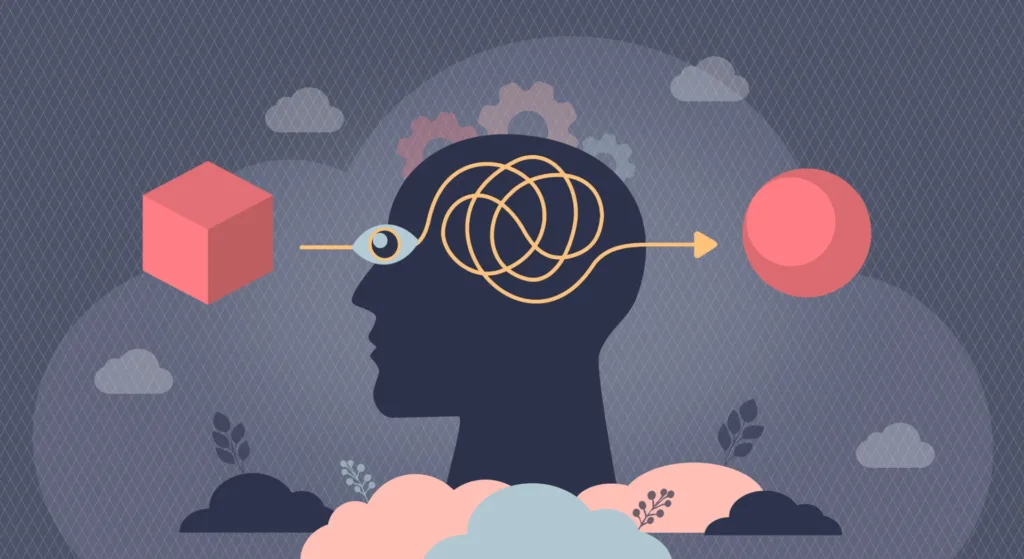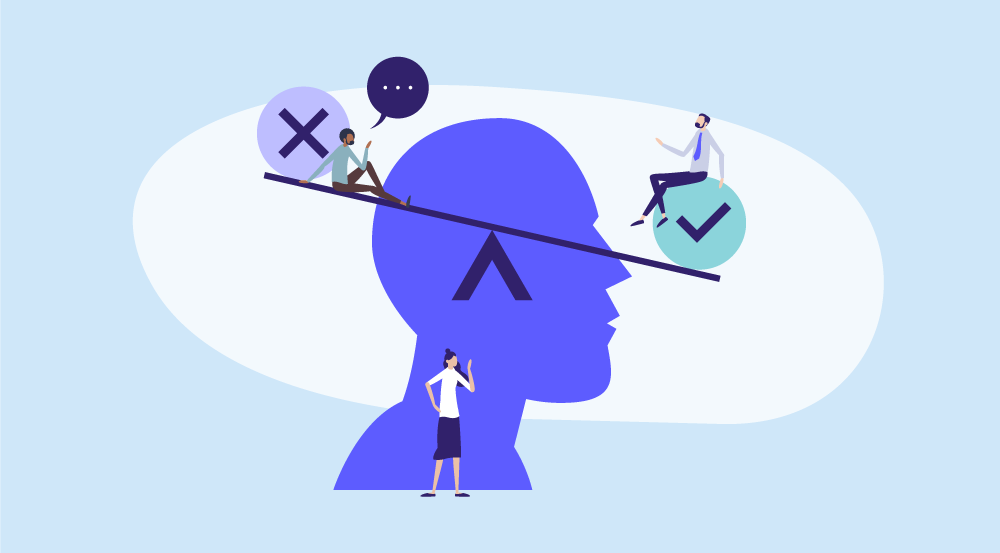In the intricate realm of design, personal bias emerges as a subtle yet formidable force, shaping creative decisions and outcomes. Let’s embark on a journey to unravel the layers of personal bias in design, exploring its nature, manifestations, and strategies for mitigation. In this post we will talk about Cognitive Biases and its influence in design decision making in detail.
Understanding Personal Bias

Personal bias is unconscious preferences, opinions, or attitudes influenced by personal experiences, beliefs, or cultural background. In design, these biases impact creative choices and decision-making, potentially leading to designs reflecting subjective viewpoints rather than inclusive approaches.
Why is it Relevant?
Personal bias matters for designers as it influences creative decisions, user experiences, and societal impact. Recognizing bias is crucial for fostering diversity, equity, and objectivity in design fields.
Addressing Bias in the Design Process
- User-Centric Design: Being aware of personal bias helps in understanding user needs without imposing subjective preferences, leading to more inclusive designs.
- Inclusive Design: Recognizing and mitigating bias is essential for creating designs accessible to diverse audiences.
- Avoiding Stereotypes: Mindful consideration of bias helps in avoiding perpetuating stereotypes in design.
- Effective Communication: Understanding bias enhances a designer’s ability to communicate effectively with diverse audiences.
- Enhanced Creativity: Challenging biases foster more innovative and creative solutions.
- Professional Growth: Overcoming biases demonstrates professional maturity and a commitment to continuous learning.
- Ethical Considerations: Considering bias contributes to the ethical practice of design.
- Global Perspective: Awareness of bias helps in designing diverse cultural contexts and ensuring global relevance.
Types of Cognitive Biases

1. Recency Bias:
Recency bias occurs when individuals prioritize or remember the most recent information over older information. This bias can influence decision-making by placing undue emphasis on recent events or experiences while disregarding long-term trends or patterns. In design, recency bias may lead designers to focus excessively on the latest trends or features, neglecting timeless principles or user needs that may have greater significance in the long run.
2. Primacy Bias:
Primacy bias refers to the tendency to remember and prioritize information presented at the beginning of a sequence or list. This bias can impact how individuals perceive and interpret information, as well as their subsequent decision-making. In design, primacy bias underscores the importance of making a strong initial impression, as users are more likely to remember and be influenced by the first elements they encounter. Designers must carefully consider the order in which information is presented to ensure that key messages or features are effectively communicated from the outset.
3. Sunk Cost Fallacy:
The sunk cost fallacy occurs when individuals continue investing resources (such as time, money, or effort) into a project or idea, even when it is no longer viable, simply because they have already invested so much. This bias can lead to irrational decision-making, as individuals prioritize recouping past investments over objectively evaluating the potential for future success. In design, the sunk cost fallacy may manifest when designers persist with ineffective design elements or features, despite evidence suggesting that alternative approaches may be more effective. Designers must be willing to acknowledge when a design direction is not working and be prepared to pivot or adapt accordingly, regardless of past investments.
4. Confirmation Bias:
Confirmation bias involves seeking or interpreting information in a way that confirms pre-existing beliefs or hypotheses, while disregarding contradictory evidence. This bias can influence how individuals perceive and evaluate information, leading to selective attention and memory. In design, confirmation bias may cause designers to overlook alternative perspectives or user feedback that contradicts their initial assumptions or preferences. To mitigate confirmation bias, designers must remain open-minded and actively seek out diverse viewpoints and evidence, challenging their own assumptions and beliefs throughout the design process.
5. False Consensus Bias:
False consensus bias occurs when individuals overestimate the extent to which others share their beliefs, preferences, or experiences. This bias can lead to an inaccurate perception of the broader population’s opinions or behaviors, as individuals project their own perspectives onto others. In design, false consensus bias may result in assumptions about user preferences or behaviors that do not accurately reflect the diversity of the target audience. Designers must conduct thorough user research and validation to ensure that design decisions are informed by a nuanced understanding of the target audience’s needs and preferences, rather than relying solely on personal assumptions or experiences.
6. Implicit Bias:
Implicit bias, also known as unconscious bias, refers to the unconscious associations and stereotypes that individuals hold about certain groups of people. These biases are often formed based on societal norms, cultural stereotypes, or personal experiences, and can influence how individuals perceive and interact with others, often without their awareness. In design, implicit bias may manifest in the unintentional exclusion or stereotyping of certain user groups, leading to products or experiences that do not adequately meet the needs of diverse users. Designers must be vigilant in identifying and addressing implicit biases throughout the design process, actively seeking to promote inclusivity and diversity in their designs.
Mitigating Cognitive Biases

- Awareness and Education: Educating oneself and the team about different types of biases.
- Diverse Perspectives: Encouraging contributions from individuals with varied backgrounds.
- User Research: Conducting unbiased research to understand user needs and preferences.
- Iterative Design Process: Embracing continuous feedback and refinement.
- Design Thinking Techniques: Utilizing empathy mapping and journey mapping to uncover biases.
- Data-Driven Decision-Making: Basing decisions on empirical evidence and data.
- Challenge Assumptions: Encouraging critical thinking and questioning biases throughout the process.
- Peer Review and Feedback: Implementing peer review mechanisms for constructive feedback.
By incorporating these strategies, designers can mitigate bias and foster a more inclusive and effective design process. Learn more at wiki
Understanding and addressing bias in design is essential for creating effective and inclusive solutions. Each bias influences decisions uniquely, but by recognizing and mitigating biases, designers can create designs that resonate with diverse audiences and foster positive change.




